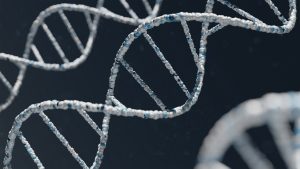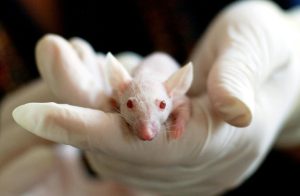CRISPR’S Life Changing Treatment for Sickle Cell Anemia
Just a few short months ago the FDA approved a potentially life-changing treatment for those with sickle cell disease. Casgevy is a CRISPR gene-editing technology that actually modifies a patient’s stem cells to treat sickle cell disease. It is the first FDA-approved treatment that utilizes CRISPR’s gene editing technology to treat genetic diseases.
Sickle cell disease (SCD) is a genetic disorder that affects red blood cells, which are responsible for carrying oxygen through the body. It is inherited in an autosomal recessive pattern, which means a person must inherit two abnormal genes (one from each parent) to develop the disease. The gene
that causes sickle cell disease is a mutated “hemoglobin beta gene (HBB) found on chromosome 11p15.5” (NCBI). Red blood cells contain hemoglobin, the protein that gives them their intrinsic red color, and it is possible to carry oxygen. In individuals that have SCD, red blood cells have a “sickle-like” shape, instead of their normal round-shape. These sickle cells can get stuck in small blood vessels, causing blockages that lead to pain, organ damage, and other complications.
Symptoms of sickle cell disease can vary widely and include things like chronic pain, fatigue, jaundice, frequent infections, and vision problems. Complications of SCD can be life-threatening as they include stroke, acute chest syndrome, organ damage, and even death. Currently, treatment for sickle cell aims to manage symptoms and prevent complications. This may include medications to help reduce pain and inflammation, blood transfusions, hydroxyurea (a medication that can help reduce the frequency of pain crises), and bone marrow or stem cell transplants. However, even with all these therapies in place, individuals who suffer from SCD are still in serious pain as these current treatments don’t work for everyone. For example, while medications like hydroxyurea can reduce the frequency of pain crises in many patients, some individuals may not experience significant benefits or may experience side effects that limit their use of the medication. In addition, the current best option for treating SCD, bone marrow transplant, is really only applicable for 15% of people who have SCD, since only those whose siblings matched as donors have the best outcomes.
That’s why Casgevy is a phenomenal breakthrough because it has the potential to address the root cause of sickle cell disease at the genetic level for each patient. This personalized approach could lead to a much higher success rate and potentially a cure. Casgevy works by using the patient’s own blood stem cells and then editing these cells using CRISPR/Cas9 technology to modify the gamma-globin genes, which are responsible for producing fetal hemoglobin, which has been known to bind to oxygen more strongly than adult hemoglobin. In addition, it prevents the red blood cells from sickling. After they reinsert these edited cells back into the bone marrow, they start producing red blood cells containing fetal hemoglobin. However, before the transplant, patients must undergo intense chemotherapy in order to make space in the bone marrow for the new cells. This chemotherapy can have side effects such as painful mouth sores, nausea, and hair loss. Despite the challenges, patients undergoing Casgevy treatment experience relief from sickle cell symptoms as fetal hemoglobin levels increase.
Casgevy provides hope for people with SCD because it’s a new approach that targets the underlying causes of the disease. Traditionally, treatments only focused on managing the pain and other symptoms, however with Casgevy not only can the symptoms be reduced, but the patient’s overall quality of life can be improved.
Works Cited
“Anemia, sickle cell - Genes and Disease.” NCBI, https://www.ncbi.nlm.nih.gov/books/NBK22238/. Accessed 29 March 2024.
“CHOP Researchers Refine Understanding of Fetal Hemoglobin Regulation.” Children's Hospital of Philadelphia, 8 August 2022, https://www.chop.edu/news/chop-researchers-refine-understanding-fetal-hemoglobin-regulation. Accessed 29 March 2024.
“First CRISPR Therapy Approved for Sickle Cell.” Columbia University Irving Medical Center, 8 December 2023, https://www.cuimc.columbia.edu/news/columbia-impact-first-new-crispr-therapy-approved-sickle-cell. Accessed 29 March 2024.
Regalado, Antonio. “The first gene-editing treatment: 10 Breakthrough Technologies 2024.” MIT Technology Review, 8 January 2024, https://www.technologyreview.com/2024/01/08/1085101/crispr-gene-editing-sickle-cell-disease-breakthrough-technologies/. Accessed 29 March 2024.
“Sickle Cell Disease.” Johns Hopkins Medicine, https://www.hopkinsmedicine.org/health/conditions-and-diseases/sickle-cell-disease. Accessed 29 March 2024.
“What is Sickle Cell Disease? | CDC.” Centers for Disease Control and Prevention, https://www.cdc.gov/ncbddd/sicklecell/features/what-is-scd.html. Accessed 29 March 2024.
Image Source: “What is Sickle Cell Disease? | CDC.” Centers for Disease Control and Prevention, https://www.cdc.gov/ncbddd/sicklecell/features/what-is-scd.html. Accessed 29 March 2024.


